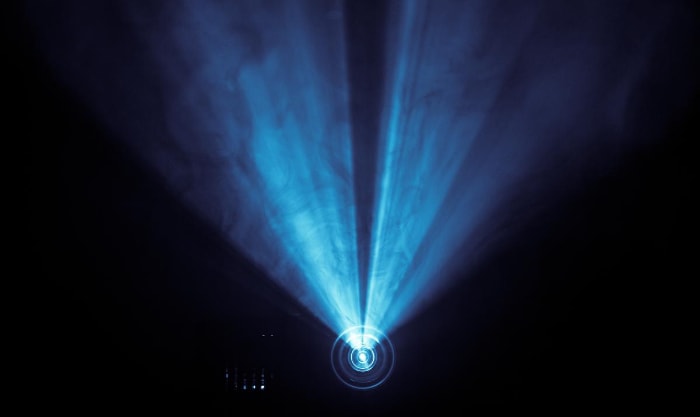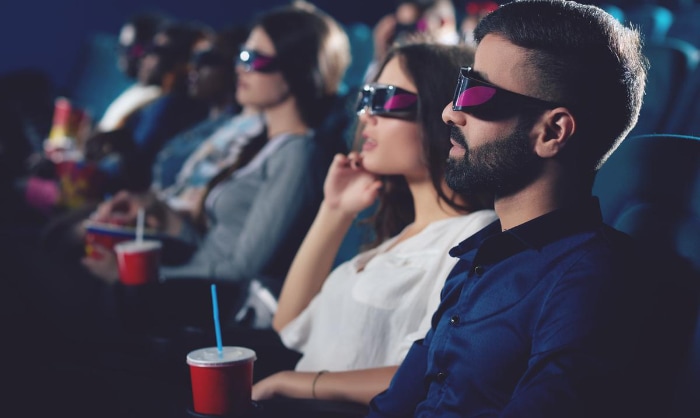2D and 3D Movies: What’s the Difference?

Cinema has long been a magical escape, a portal to worlds crafted by the imagination and projected onto the big screen. As technology advances, the way we experience films evolves, providing filmmakers and audiences alike with an array of options for capturing and enjoying cinematic tales.
At the heart of this progression lies a key choice: whether to experience a film in 2D or 3D. Each option offers its own set of benefits and drawbacks, affecting everything from production logistics to viewer engagement.
What are 2D Movies?
Two-dimensional movies have been the bedrock of cinema for over a century, setting the standard for how stories are told on screen.
Technical Aspects of 2D Movies
Two-dimensional films utilize a single camera to capture images from a single viewpoint. These images are flat, having width and height, but lacking the depth that 3D films possess.
When projected, they create a flat visual plane on which the movie unfolds.
Historical Background of 2D Films
The history of 2D movies dates back to the late 19th century with the invention of motion pictures. Over the decades, this format has been refined and enhanced through the development of color technology, sound systems, and high-definition resolution.
For many years, 2D was the default and sole format available for filmmakers and audiences.
The Filming Process
In 2D movies, filmmakers employ various techniques such as camera angles, lighting, and framing to convey depth and perspective. However, the actual visual output remains flat and is reliant on artistic interpretation to convey a sense of dimension.
Special effects can be added in post-production, but these also maintain the 2D structure.
Projection and Viewer Experience
Projection of 2D films is straightforward. It involves casting the recorded images onto a flat screen.
The viewers do not need any special equipment to watch a 2D movie. There are no glasses to wear or extra devices to enhance the experience. The simplicity of 2D movies has made them accessible and widely accepted around the world.
Market Reception and Popularity
Two-dimensional movies continue to be popular because of their broad appeal and accessibility. They are generally less expensive to produce and to watch, making them an attractive option for both filmmakers and audiences.
The format's longevity speaks to its enduring relevance in the rapidly evolving cinematic landscape.
What are 3D Movies?
If 2D movies are the time-honored staple of cinematic storytelling, then 3D films represent the modern, immersive frontier. Offering a multi-dimensional experience that goes beyond the flat plane, 3D movies bring unique excitement and depth to viewers.
Technical Foundations of 3D Films
Creating a 3D movie involves capturing images from two different perspectives, mimicking the way our eyes perceive depth in the real world. Specialized stereo cameras, or sometimes dual cameras, are used for this purpose.
The resulting images contain the illusion of depth, giving viewers the sensation of being inside the film's universe.
How 3D Movies Are Filmed
The filming process for 3D movies is more complex than that of 2D films. Stereo cameras capture two simultaneous images, which are later combined during post-production to create the 3D effect.
Some filmmakers also convert 2D films into 3D in post-production, although this method is often considered to be less authentic.
Viewer Experience and 3D Glasses
One of the distinguishing features of 3D movies is the requirement for special glasses to perceive the 3D effect. These glasses filter images separately to each eye, allowing the brain to integrate them and perceive depth.
Various types of 3D glasses exist, from the classic red and blue anaglyph to more advanced polarized and shutter glasses.
Projection Systems for 3D Films
3D films require specialized projection systems to display their multi-dimensional images. These projectors cast two sets of images onto the screen.
When viewers wear their 3D glasses, the lenses separate these images, allowing the eyes to see them as a single three-dimensional picture.
Market Trends and Popularity
3D movies gained significant traction in the 21st century with advancements in digital technology. While ticket prices for 3D movies are generally higher than for their 2D counterparts, audiences have been willing to pay the premium for the enhanced experience.
However, the market is somewhat polarized, as some viewers prefer the traditional 2D format for comfort reasons or out of personal preference.
The Technical Differences

While both 2D and 3D movies serve the same fundamental purpose of storytelling, the technology behind each is vastly different. The technical distinctions have a ripple effect, influencing everything from the filming process to the viewer's experience.
Camera Equipment
In 2D filmmaking, standard single-lens cameras are usually sufficient for capturing scenes. These cameras record images from a single viewpoint, creating a flat visual plane.
On the other hand, 3D filmmaking often involves stereo cameras that capture images from two slightly offset perspectives. This dual capturing mimics the way human eyes perceive depth, thus creating a three-dimensional visual field.
Filming Techniques
2D films rely on artistic techniques like lighting, framing, and camera angles to give an illusion of depth on a flat screen. In contrast, 3D films actually capture depth during the filming process.
The two perspectives are later combined in post-production to give viewers the sense of three-dimensionality. Additionally, some 3D films are made by converting already filmed 2D movies, although this method is generally considered less effective in creating a genuine 3D experience.
Post-Production Process
The post-production of 2D films is simpler and usually less time-consuming. It involves editing the recorded images and adding effects, sound, and color correction.
3D films require a more complex post-production process. The two sets of images captured by stereo cameras must be meticulously aligned and synchronized to create the depth effect.
This often involves intricate editing and can substantially lengthen the time needed for post-production.
Projection Technology
Projection is another area where 2D and 3D differ significantly. Standard projectors suffice for 2D films, casting the pre-recorded flat images onto a screen.
In contrast, 3D projection systems are specialized pieces of equipment. They project two sets of images that correspond with the two perspectives captured during filming. When combined by the 3D glasses worn by viewers, these images create a single, three-dimensional visual experience.
The Viewer Experience
The cinematic landscape is not solely shaped by filmmakers and their technical choices; it is also molded by how viewers interact with and perceive movies. This brings us to the heart of what differentiates 2D and 3D films—the experience they offer to audiences.
Visual Immersion
3D movies aim for an immersive experience, intending to draw viewers into the scenes. The depth cues provided by the dual images create a more engaging visual landscape.
On the other hand, 2D films operate on a flat plane, relying more on storytelling, dialogue, and visual aesthetics to maintain viewer interest.
Accessibility and Comfort
2D movies are universally accessible and require no special equipment from the viewer's end, making them a straightforward choice for most audiences. 3D movies, however, require the use of specialized glasses, which may cause discomfort or headaches for some viewers.
The necessity of these additional accessories may also deter individuals from choosing 3D options.
Ticket Pricing
Economic factors also play a role in the viewer experience. Generally, tickets for 3D movies are priced higher than those for 2D films.
This price difference stems from the higher production costs and the use of specialized projection equipment for 3D films. As a result, some viewers may opt for 2D versions solely based on financial considerations.
Genre and Content Suitability
Not all types of films benefit from the added dimension of 3D technology. Action-packed or visually stunning movies like sci-fi or fantasy genres often make the most of 3D capabilities.
Conversely, dramas, comedies, and dialogue-driven movies may not gain much from the 3D format and are often best enjoyed in 2D, where the focus remains squarely on the story and characters.
Visual Effects and Cinematic Scope
While 2D movies offer a range of special effects, their scope is limited to a flat plane. In 3D movies, visual effects can be more dramatic and expansive, leveraging the added dimension to enhance storytelling.
However, the effectiveness of these effects largely depends on the skill with which the 3D technology is employed in the filmmaking process.
Impact on Filmmaking

While viewers engage with the end product on screen, filmmakers interact with the movie format at a foundational level, making critical decisions that shape the visual and emotional impact of the film. The choice between 2D and 3D is not just a technical consideration but a fundamental part of a movie’s creative vision.
Creative Choices and Constraints
In 2D filmmaking, directors rely on classic techniques such as framing, camera movement, and lighting to create a sense of depth and space. These traditional methods give them a wide range of creative freedom.
In contrast, 3D filmmaking imposes additional constraints because the technology itself dictates certain angles and movements to effectively capture depth. However, when used adeptly, 3D can amplify the storytelling, turning the format into a character in its own right.
Budget and Production Costs
3D films generally incur higher production costs than their 2D counterparts. The specialized equipment, additional post-production work, and the extra time required for editing contribute to this.
These financial implications must be weighed carefully against the potential benefits, such as increased ticket sales or a more immersive viewer experience.
Time Investment
The complexity of 3D technology also translates to a longer production timeline. From initial filming to final editing, each step requires meticulous planning and execution to achieve the desired 3D effects.
2D films, on the other hand, often have more streamlined production processes, making them quicker to market.
Skill Set and Expertise
Creating a successful 3D movie demands specialized knowledge and skills that go beyond traditional filmmaking. Directors and cinematographers must be well-versed in the technical aspects of 3D capture and editing, and may even require a separate team of experts dedicated solely to the 3D elements.
For 2D films, the required expertise is generally more aligned with conventional filmmaking techniques.
Audience Appeal and Marketability
Filmmakers must also consider how their format choice will be received by audiences. While 3D films can be marketed as premium experiences, offering something extra beyond the standard fare, they also limit the audience to those willing to pay higher ticket prices and wear 3D glasses.
2D films have broader appeal and can be enjoyed without any special requirements, making them a safer bet for widespread distribution.
Advantages and Disadvantages

Every coin has two sides, and the debate between 2D and 3D movies is no exception. While both formats have been successful in captivating audiences for decades, each comes with its own set of pros and cons.
Advantages of 2D Films
2D films are the industry standard, primarily because of their ease of production and universal accessibility. They can be screened anywhere without specialized equipment, which makes them more versatile for various distribution channels like television, online streaming, and international releases.
Additionally, they are usually less expensive to produce, allowing for a broader range of budget options.
Disadvantages of 2D Films
Despite their widespread use, 2D films lack the visual depth that 3D technology can offer. For movies that aim to create an extraordinarily immersive experience—think large-scale action sequences or lush, fantastical environments—2D can be limiting.
The flat visual plane sometimes falls short in delivering an all-encompassing experience.
Advantages of 3D Films
3D films offer a depth of field that adds an extra layer of immersion and spectacle. For specific genres and stories, this enhanced visual experience can significantly amplify the emotional impact and audience engagement.
For instance, epic adventures and fantasy films often benefit greatly from 3D presentation. The format can also command higher ticket prices, potentially increasing revenue for filmmakers and cinemas alike.
Disadvantages of 3D Films
On the flip side, 3D films come with logistical and financial challenges. The need for specialized cameras, screens, and even post-production experts can significantly inflate the budget.
There's also the risk of viewer discomfort, as some people experience eye strain or headaches when watching 3D content. Moreover, the higher ticket prices may discourage a segment of potential viewers, limiting the audience reach.
Comparing the Two Formats
When weighing the advantages against the disadvantages, it becomes clear that neither 2D nor 3D films are superior in all aspects. The better choice depends on the specific requirements of the project at hand.
2D remains the go-to for most traditional storytelling needs and broader accessibility. In contrast, 3D can offer a heightened sensory experience that works best for films designed with this added layer of visual complexity in mind.
Conclusion
Drawing from the extensive examination of 2D and 3D movies, it's clear that each format offers a unique set of characteristics that can either enhance or detract from the filmmaking process and viewer experience. Both have their own technical specifications, viewer engagement levels, impacts on filmmaking, and sets of advantages and disadvantages.
While 3D films bring depth and immersion into the cinematic experience, they often come with higher production costs, specialized requirements, and a more limited audience. On the other hand, 2D films offer universal accessibility and a tried-and-true platform for storytelling, albeit without the extra layer of visual complexity that 3D can provide.
Ultimately, the choice between the two hinges on the particular needs of the film project and the intended audience, affirming that neither format is universally superior but rather uniquely suited for different cinematic objectives.


